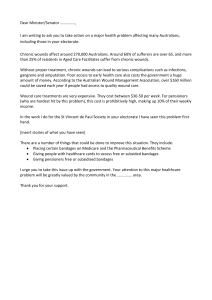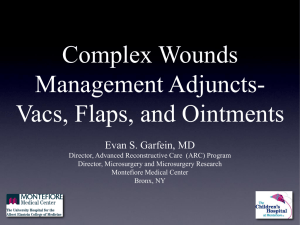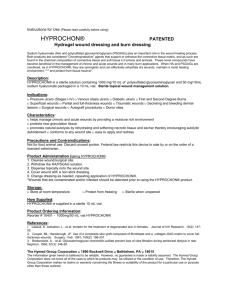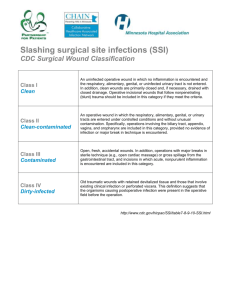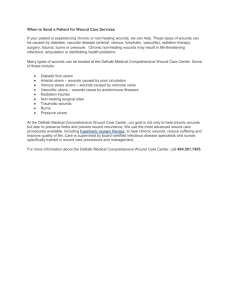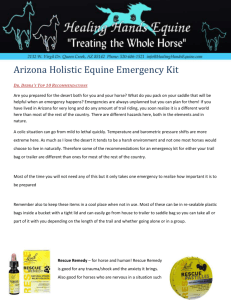stud farm
advertisement
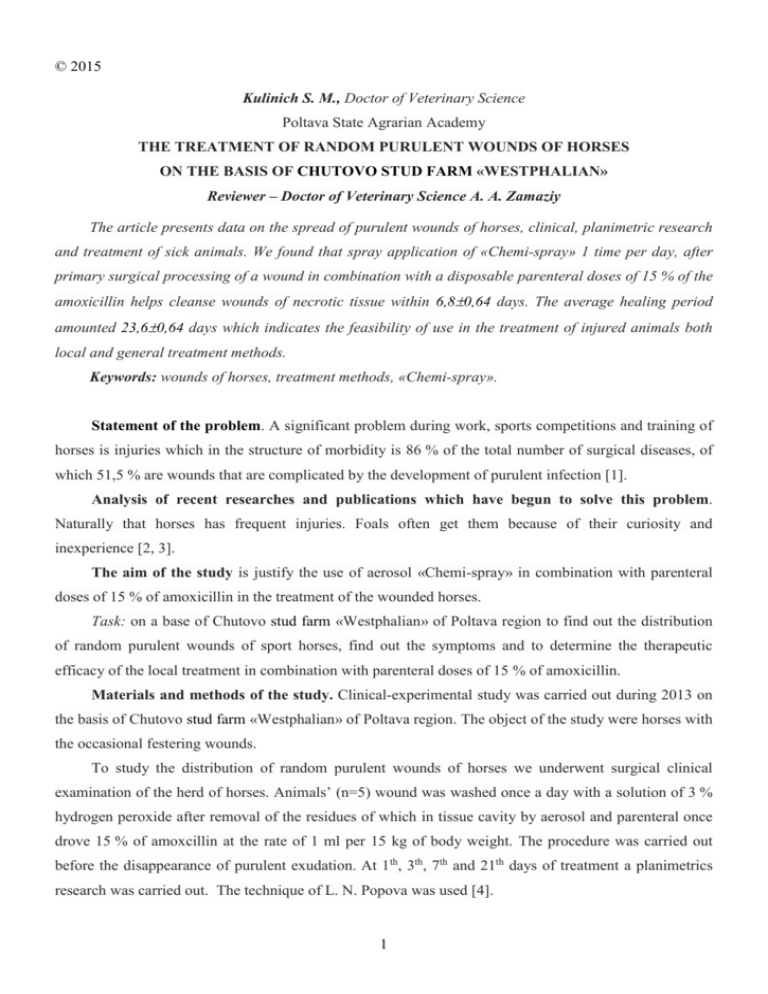
© 2015 Kulinich S. M., Doctor of Veterinary Science Poltava State Agrarian Academy THE TREATMENT OF RANDOM PURULENT WOUNDS OF HORSES ON THE BASIS OF CHUTOVO STUD FARM «WESTPHALIAN» Reviewer – Doctor of Veterinary Science A. A. Zamaziy The article presents data on the spread of purulent wounds of horses, clinical, planimetric research and treatment of sick animals. We found that spray application of «Chemi-spray» 1 time per day, after primary surgical processing of a wound in combination with a disposable parenteral doses of 15 % of the amoxicillin helps cleanse wounds of necrotic tissue within 6,80,64 days. The average healing period amounted 23,60,64 days which indicates the feasibility of use in the treatment of injured animals both local and general treatment methods. Keywords: wounds of horses, treatment methods, «Chemi-spray». Statement of the problem. A significant problem during work, sports competitions and training of horses is injuries which in the structure of morbidity is 86 % of the total number of surgical diseases, of which 51,5 % are wounds that are complicated by the development of purulent infection [1]. Analysis of recent researches and publications which have begun to solve this problem. Naturally that horses has frequent injuries. Foals often get them because of their curiosity and inexperience [2, 3]. The aim of the study is justify the use of aerosol «Chemi-spray» in combination with parenteral doses of 15 % of amoxicillin in the treatment of the wounded horses. Task: on a base of Chutovo stud farm «Westphalian» of Poltava region to find out the distribution of random purulent wounds of sport horses, find out the symptoms and to determine the therapeutic efficacy of the local treatment in combination with parenteral doses of 15 % of amoxicillin. Materials and methods of the study. Clinical-experimental study was carried out during 2013 on the basis of Chutovo stud farm «Westphalian» of Poltava region. The object of the study were horses with the occasional festering wounds. To study the distribution of random purulent wounds of horses we underwent surgical clinical examination of the herd of horses. Animals’ (n=5) wound was washed once a day with a solution of 3 % hydrogen peroxide after removal of the residues of which in tissue cavity by aerosol and parenteral once drove 15 % of amoxcillin at the rate of 1 ml per 15 kg of body weight. The procedure was carried out before the disappearance of purulent exudation. At 1th, 3th, 7th and 21th days of treatment a planimetrics research was carried out. The technique of L. N. Popova was used [4]. 1 Obtained experimental data were processed by the method of variation statistics with the definition of the arithmetic mean (M) and standard deviations (m). The research results. During the year animals were examined diagnosed wounds, in the group of mares were sick 16,6%, and in the group of foals was sick 21,4 % (Table 1). 1. Distribution of random purulent wounds of horses on the basis of Chutovo stud farm «Westphalian» Found injured animals during the year autumn winter spring heads % heads % heads % heads % 0 0 0 0 0 0 0 0 Sex and age group Surveyed heads Stallions 4 Mares 12 2 16,6 1 8,3 0 0 1 8,3 0 0 Foals 14 3 21,4 2 14,2 0 0 0 0 1 7,1 All together 30 5 16,6 3 10 0 0 1 3,3 1 3,3 summer heads % 0 0 Mares was sick in the Spring and Fall (8,3 %), and the foals was sick in the Fall (14,2 %) and in the Summer (7,1 %). 2. Horse wounds localization Places of localization of wounds neck, pectoral, Sex and Amount genitourinary extremities withers, abdominal age group of animals organs back wall heads % heads % heads % heads % Stallions 4 0 0 0 0 0 0 0 0 Mares 12 0 0 1 8,3 1 8,3 0 0 Foals 14 2 14,2 0 0 0 0 0 0 All 30 2 6,6 1 3,3 1 3,3 0 0 together head heads 0 0 1 % 0 0 7,14 1 3,3 Mares were injured area of neck and pectoral wall (see picture), foals were injured extremities (14,2 %) and head (7,1 %) (Table 2). 2 Picture. Running sore of horse During study the causes of wounds of horses we found that in 100,0 % they were due to traumatic contact with objects. In particular the reason of eaten and torn wounds was a fight between mares. The reason of cut and torn wounds was pushing of animals while running gallop on the grill. The reason of cut wounds was injury at fence on the playground. The average time of wounds cleansing were 6,80,64 days. At the same time full faster wound healing were recorded on the 22th day. The longest healing the wounds lasted 25 days. The average healing period amounted 23,60,64 days. The area of the wound surface of animals in the treatment process significantly decreased (Table 3). 3. Dynamic of area of the surface of the wound during the treatment of horse with the infected wounds, cm2, M±m Size of defect Indexes Days of treatment 1 3 10,2±0,36 7 21 7,4±0,36 3,7±0,18 9,9±0,64 A day after the treatment wound size was slightly increased, although on the third day of treatment they decreased by 3 %. On the seventh day of treatment indicators decreased by 27,5 % and 26,3 % compared to 3th day. The final data were in 2,7 times less in comparison with the original data. Conclusion. We clarified that the proposed method of treatment of purulent wounds of horses is quite effective as shown by the final measures of the size of the wound defects: at 21th day they were in 2,7 times less in comparison with the original data. 3 BIBLIOGRAPHY 1. Мельник Н. Лечение надрывов сухожилий на ногах у лошадей / Н. Мельник [Електронний ресурс]. – Режим доступу : http://www.proza.ru/2010/10/22/1420 2. Романова О. В., Крячко О. В., Синицина Е. А. Деликатное лечение гнойных ран у лошадей / О. В. Романова, О. В. Крячко, Е. А. Синицина [Електронний ресурс]. – Режим доступу : http://zooprice.ru/articles/detail.php?ID=454245 3. Тимофеев С. В. Раны и их лечение у животных / С. В. Тимофеев. – М., 2007. 4. Раны и раневая инфекция : [под ред. В. О. Кузина, Б. М. Костюченок / 2–е изд., перераб. и доп.]. – М. : Медицина, 1990 – 592 с. 4
